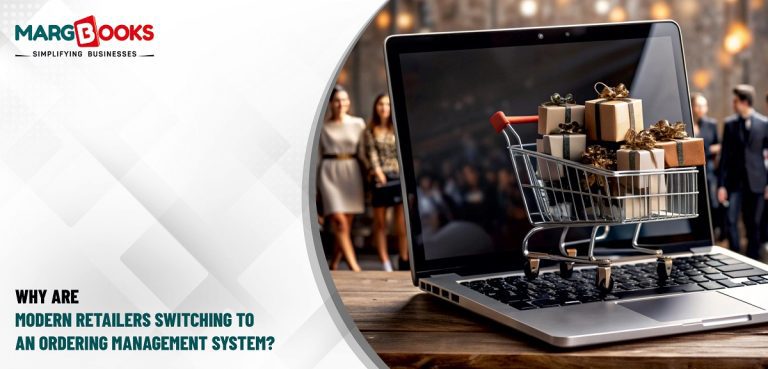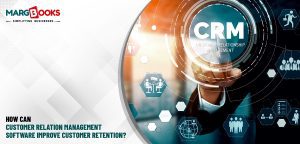Running a retail business used to mean juggling phone calls, handwritten notes, and hoping nothing fell through the cracks. But something interesting is happening in stores across the country. More and more retail owners are ditching their old ways and switching to an Ordering Management System.
It’s not just a tech trend, it’s becoming a necessity. Small shop owners who once swore by their paper systems are now wondering how they ever managed without digital order tracking. The change isn’t just about keeping up with technology; it’s about staying sane while growing your business.
Why an Ordering Management System Changes Everything for Retailers?
Let’s be honest, managing orders the old way is exhausting. You’ve got customers calling in, emails coming through, walk-ins wanting custom orders, and somewhere in that chaos, things get lost. Sarah, who runs a boutique clothing store, told me she used to spend her evenings rewriting orders just to make sure she understood her handwriting from earlier that day.
That’s where modern order management steps in. Instead of hunting through sticky notes and notebooks, everything lives in one place. When a customer places an order, whether it’s in-person, over the phone, or online, it all flows into the same system. No more playing detective to figure out what Mrs. Johnson ordered last Tuesday.
The Paper Trail Problem
Remember when “filing” meant actual paper files? Those days created more problems than they solved:
- Orders are getting mixed up between different staff members
- Customers calling to check the status, and you having no clue where their order stands
- Duplicate orders because someone forgot to mark the original as complete
- Lost revenue when orders simply disappeared into the void
Modern retailers are tired of playing catch-up with their own business.
Real Stores, Real Changes
Take Sumit’s hardware store, for instance. He started using our Ordering management system last year after his third major order mixup in a month. Now, when contractors call asking about their lumber delivery, Mike can pull up their order in seconds instead of rifling through a shoebox full of receipts.
The difference isn’t just operational, it’s personal. Sumit’s stress levels dropped, his customers trust him more, and he enjoys running his store again. That’s what happens when you stop fighting your systems and start using them.
And if you’re dealing with tax requirements, having GST billing software that talks to your order system means less manual data entry and fewer calculation errors. Everything works together instead of against you.
What Makes the Difference?
Here’s what retailers are discovering when they make the switch:
- Instant Order Tracking: Every order gets a number, a status, and a clear timeline. No more guessing games.
- Customer Communication: Instead of calling customers with updates, the system can send automatic notifications. Your customers feel informed, not ignored.
- Inventory Connection: When someone orders something you don’t have, you know immediately. No more promising delivery dates you can’t meet.
- Staff Coordination: Whether you have two employees or twenty, everyone sees the same information. No more “I thought you were handling that” conversations.
The Money Side of Things
Let’s talk about what matters, your bottom line. Switching to a digital system isn’t just about convenience; it’s about not losing money to preventable mistakes.
Anil runs a small electronics repair shop and switched to MargBooks after calculating how much he was losing to order errors. Between refunds for wrong parts, rushed shipping to fix mistakes, and the time spent apologizing to frustrated customers, she was hemorrhaging money without realizing it.
Hidden Costs of Old Systems
Most retailers don’t realize how much their manual processes cost them:
- Time spent hunting for order information
- Expedited shipping fees to fix mistakes
- Lost customers who got tired of the confusion
- Staff overtime to sort through order backlogs
An ordering system pays for itself just by eliminating these hidden expenses.
Integration That Works
The beauty of modern systems is how they connect with other tools you’re already using. When MargBooks integrates with online invoice software, you’re not just managing orders. You’re creating a smooth flow from order to payment.
The Setup Reality
Worried about the transition? Most retailers are surprised by how straightforward it is. You don’t need to be a tech wizard to make this work. The key is starting simple and building up as you get comfortable.
Marcus, who owns a small furniture store, put it best: “I thought I’d need to hire someone to set this up. Turns out, Margbooks walked me through everything, and I was running orders through the system the same day.”
What do Your Customers Notice?
Your customers might not care about your backend systems, but they notice the results. Faster order processing, accurate delivery dates, and proactive communication. These are the things that turn one-time buyers into loyal customers.
When orders flow smoothly, you can focus on what matters: taking care of your customers and growing your business. The system handles the details so you can handle the relationships.
Conclusion
The retailers making the switch to an Ordering Management System aren’t just following trends. They’re solving real problems that were costing them money and peace of mind. From eliminating order errors to improving customer communication, the benefits show up in every part of the business.
Whether you’re running a small shop or managing multiple locations with MargBooks, the question isn’t whether you need better order management. It’s how much longer you can afford to wait. The retailers who made the change aren’t looking back, and their customers can feel the difference.




